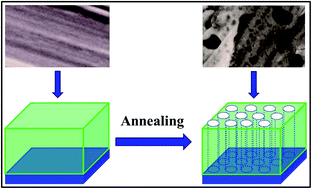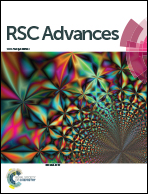Vacuum-annealing-tailored robust and flexible nanopore-structured γ-Fe2O3 film anodes for high capacity and long life Na-ion batteries
Abstract
Relatively high cost and limited resources are limiting the broad applications of Li-ion batteries. Na-ion batteries are one of the most promising replacement candidates because of abundant sodium resources, low price and similarity with Li insertion chemistry. For the first time, γ-Fe2O3 film was grown directly on a copper sheet with radio frequency magnetron sputtering as an anode for Na-ion batteries. Results show that the γ-Fe2O3 film annealed at 600 °C delivers a high reversible capacity of 450 mA h g−1 and nearly 100% capacity retention over 100 charge–discharge cycles, significantly outperforming all the previously reported examples. It is believed that the high performance of the Na-ion anode can be attributed to high temperature annealing producing nanopores for a large ion-inserting surface area and uniform γ-Fe2O3 particles firmly loaded on the surface of the Cu substrate to robustly retain the film structure during the Na-ion intercalation process for long cycle life. This work holds great promise for the fabrication of inexpensive and non-toxic Na-ion batteries for practical applications.

- This article is part of the themed collection: Materials for Energy storage

 Please wait while we load your content...
Please wait while we load your content...